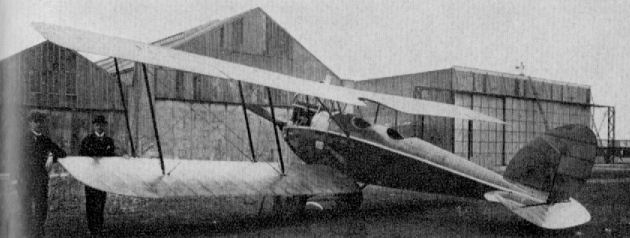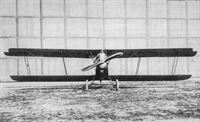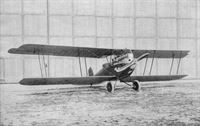
Описание
Страна: Германия
Год: 1918
O.Thetford, P.Gray German Aircraft of the First World War (Putnam)
D.F.W. F 37
A late 1918 product, the F 37 may have been the C VII, but this is not confirmed. After the war, a height record of 7,700 m. (25,255 ft.) was obtained when fitted with 260 h.p. B.M.W. IV engine. Engine, 220 h.p. Benz IVa. Span, 13.6 m. (44 ft. 7 1/2 in.). Length, 7.0 m. (22 ft. 1 5/8 in.). Height, 2.8 m. (9 ft. 2 1/4 in.). Area, 38 sq.m. (410.4 sq.ft.). Weights: Empty, 800 kg. (1,760 lb.). Loaded 1,230 kg. (2,706 lb.). Speed, 160 km.hr. (100 m.p.h.). Climb, 1,000 m. (3,280 ft.) in 3 min.
Описание:
- O.Thetford, P.Gray German Aircraft of the First World War (Putnam)
- J.Stroud European Transport Aircraft since 1910 (Putnam)
- J.Herris DFW Aircraft of WWI (A Centennial Perspective on Great War Airplanes 29)
- Jane's All The World Aircraft 1919
Фотографии
-
M.Dusing - German Aviation Industry in WWI. Volume 1 /Centennial Perspective/ (84)
DFW C.VII (F37) (1918)
-
J.Herris - DFW Aircraft of WWI /Centennial Perspective/ (29)
The final DFW two-seater design to be completed had the internal company designation F 37; it is thought to have been assigned the military designation DFW C.VII but this is not confirmed. It was powered by a 220 hp Benz Bz.IVa. When fitted with a 260 hp BMW.IV engine postwar it achieved an altitude record of 7,700 m. (Peter M. Bowers Collection/Museum of Flight)
-
J.Herris - DFW Aircraft of WWI /Centennial Perspective/ (29)
The final DFW two-seater design is thought to have been assigned the military designation DFW C.VII but this is not confirmed. It was powered by a 220 hp Benz Bz.lVa. (Peter M. Bowers Collection/Museum of Flight)
-
Jane's All The World Aircraft 1919 /Jane's/
A D.F.W. type C.37 III.
-
M.Dusing - German & Austro-Hungarian Aero Engines of WWI. Vol.1 /Centennial Perspective/ (64)
BMW IV-powered DFW C.VII world altitude record, 9,920 m on May 9, 1919. Flugsport 1919.
-
J.Herris - DFW Aircraft of WWI /Centennial Perspective/ (29)
The DFW P.1 was a postwar passenger conversion of the DFW C.VII with cabin for two passengers. Like most aircraft of the time, the pilot's cockpit was open so the pilot could feel the wind and hear the wires more clearly, important clues to aircraft performance given the limited instrumentation. (Peter M. Bowers Collection/Museum of Flight)
-
J.Herris - DFW Aircraft of WWI /Centennial Perspective/ (29)
Some attempts were made to improve travel conditions by fitting cabins in wartime aircraft. Many of these appeared to have been inspired by the design of the horse carriage. The example here is the D.F.W. P 1.
-
J.Herris - DFW Aircraft of WWI /Centennial Perspective/ (29)
The DFW P.1 postwar passenger conversion of the DFW C.VII with cabin for two passengers registered D 187, the only DFW P.1 built. Like the C.VII from which it was derived, the P.1 had balanced ailerons. (Peter M. Bowers Collection/Museum of Flight)
-
J.Herris - DFW Aircraft of WWI /Centennial Perspective/ (29)
The DFW P.1 was also known as the DFW Limousine and the smiles on these passengers confirm the name was appropriate. The cabin decor was far more luxurious than the Spartan combat aircraft DFW previously built.
-
J.Herris - DFW Aircraft of WWI /Centennial Perspective/ (29)
This DFW Limousine (P.1) drawing appeared in Flug-Welt in 1919 and provides useful details of the passenger cabin. Interestingly, the wide pilot's cockpit could also hold two crew-members on seats over the fuel tank.












